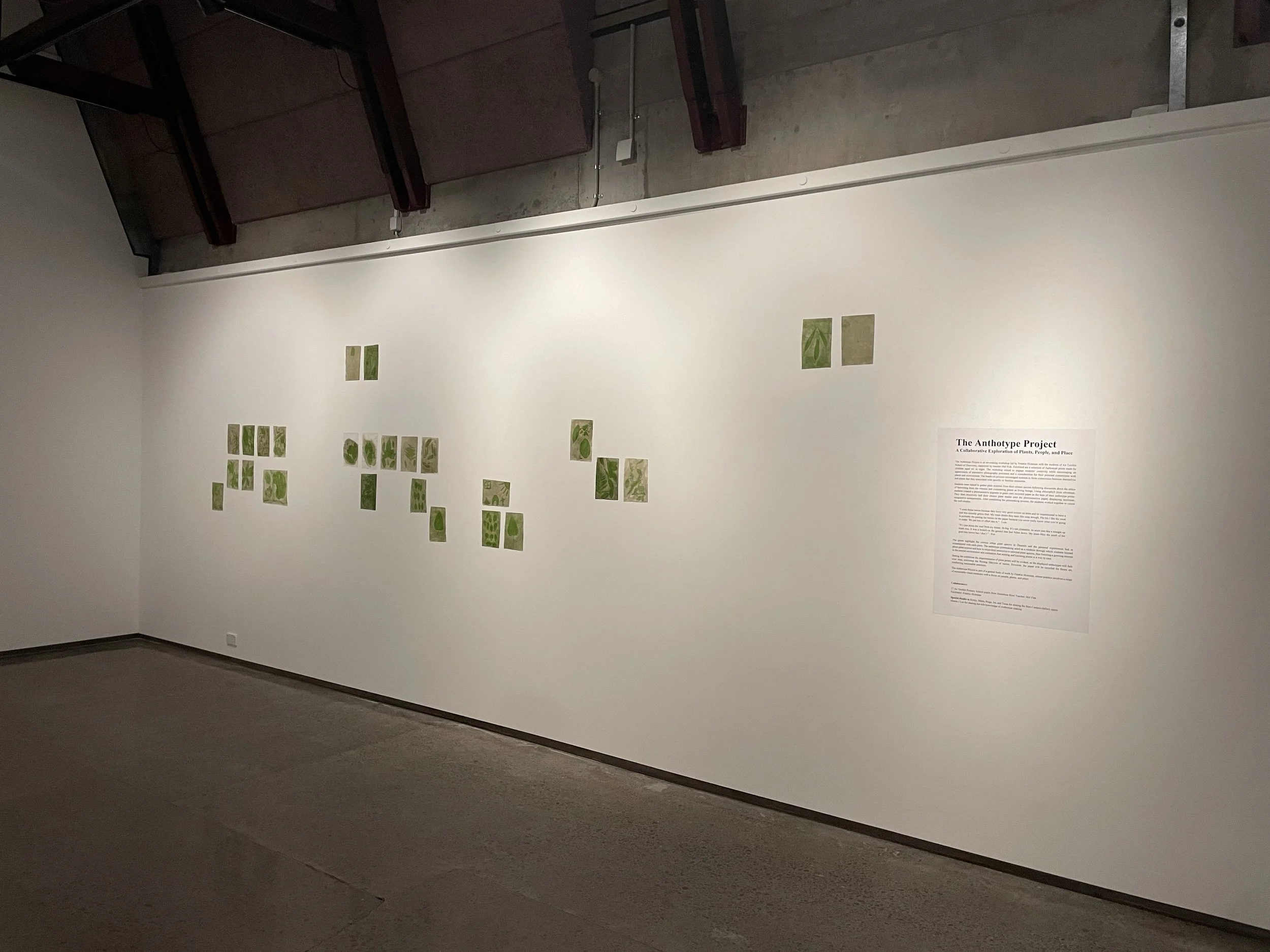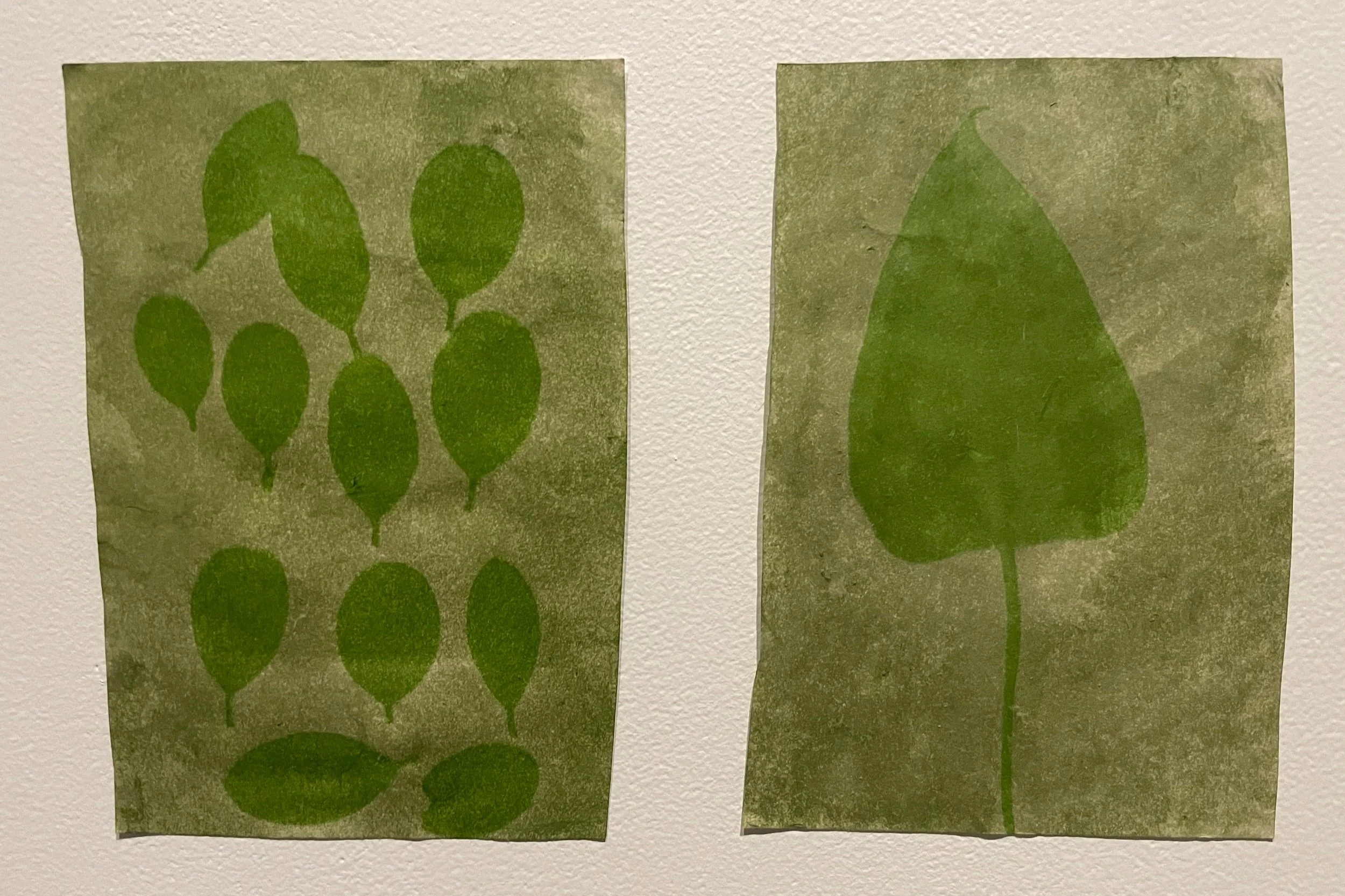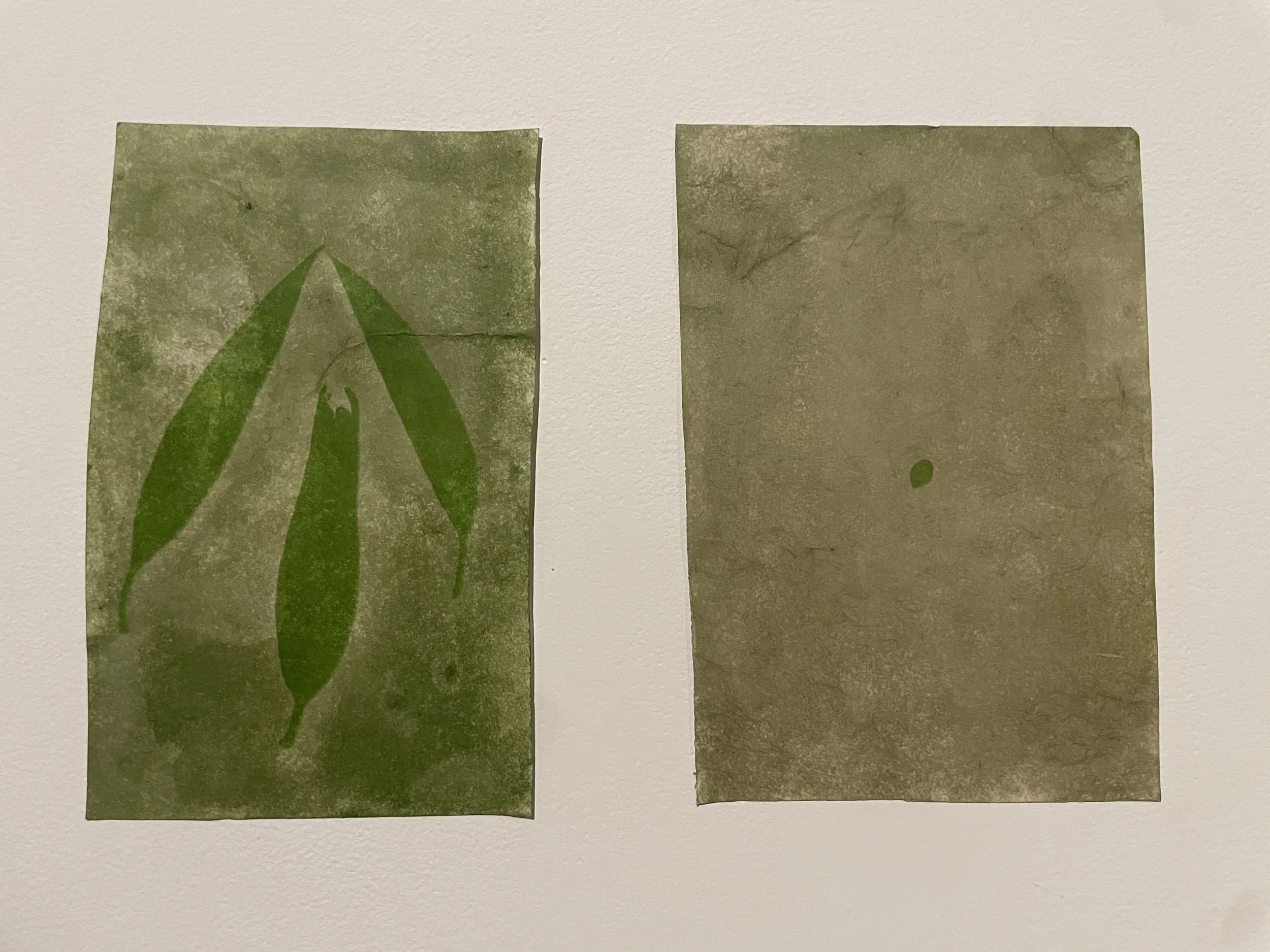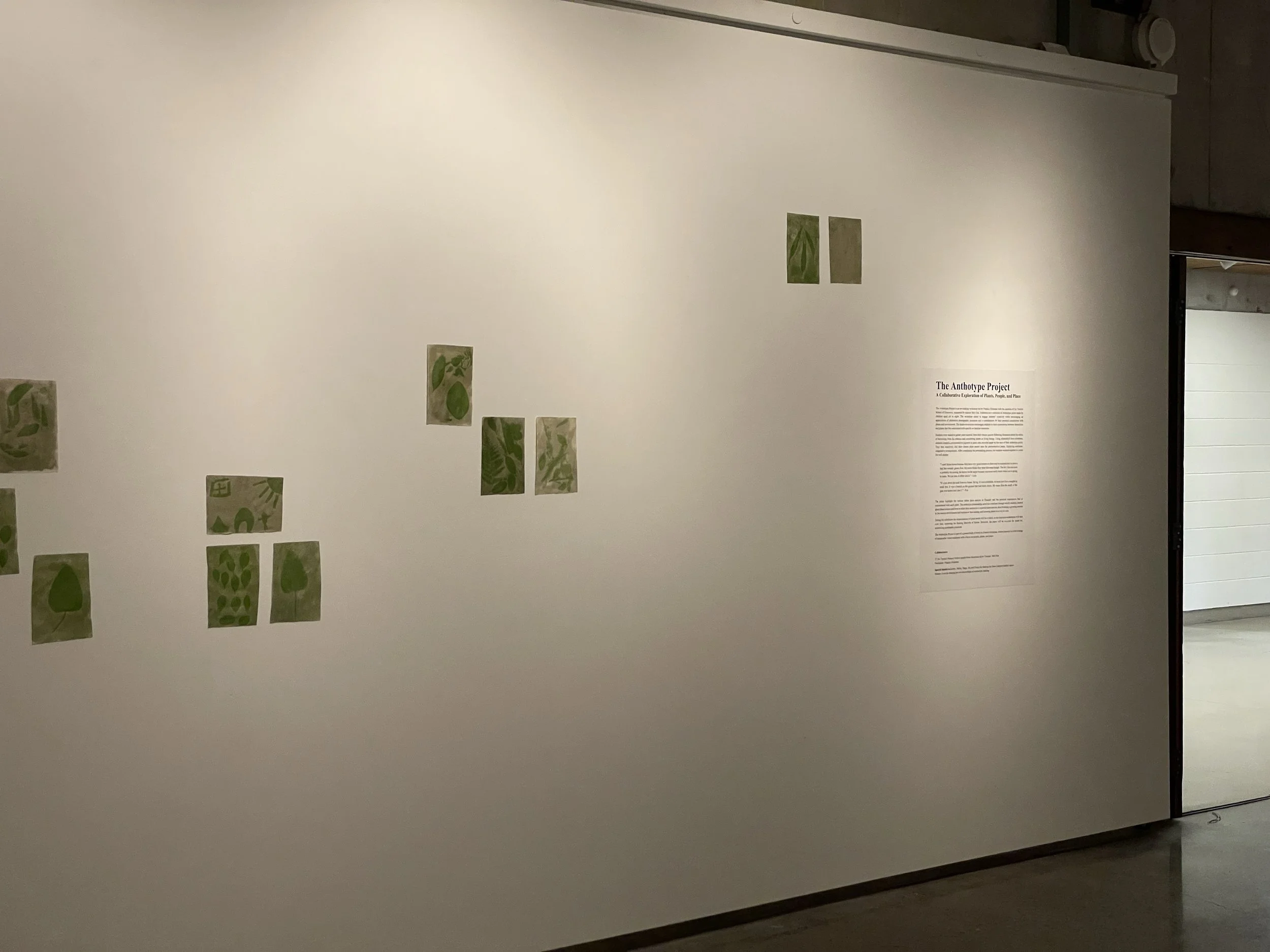The Anthotype Project
A Collaborative Exploration of Plants, People, and Place
The Anthotype Project was an art-making workshop led by Frankie Hickman with students from Ao Tawhiti Unlimited Discovery, supported by teacher Mel Fisk. Exhibited were a selection of anthotype prints made by children aged six to eight. The workshop aimed to engage students' creativity while encouraging an appreciation of alternative photography processes and a consideration for their personal connections with plants and environment. The hands-on process encouraged students to form connections between themselves and plants that they associated with specific or familiar memories.
Students were tasked to gather material from their chosen plant species, following a discussion about the ethics of harvesting from the whenua - considering plants as living beings. Using chlorophyll from silverbeet, students created a photosensitive pigment to paint onto recycled paper as the base of their anthotype prints. They then intuitively laid their chosen plant matter onto the photosensitive paper, displaying nonlinear, imaginative arrangements. After completing the process, the students worked together to curate the wall display.
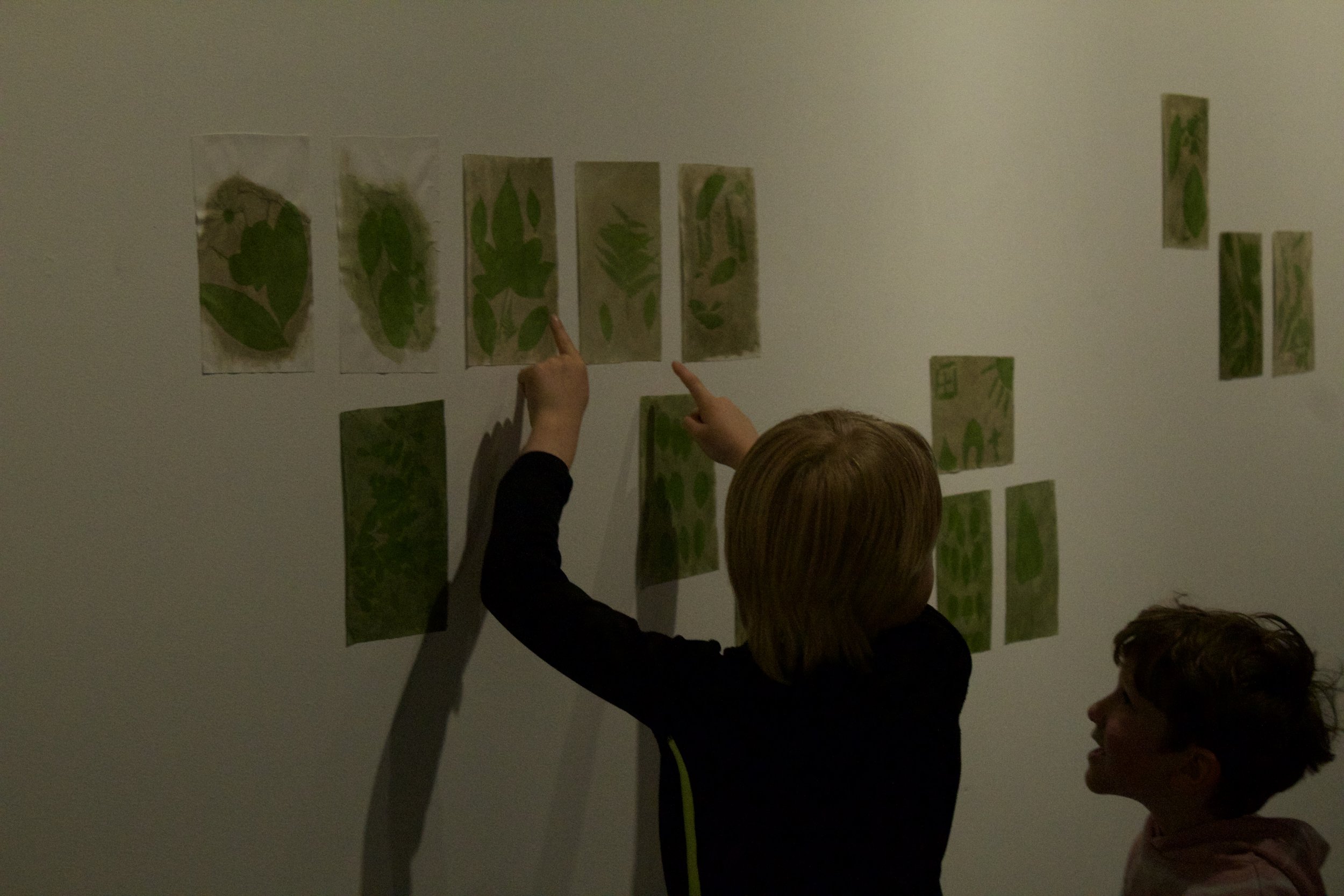
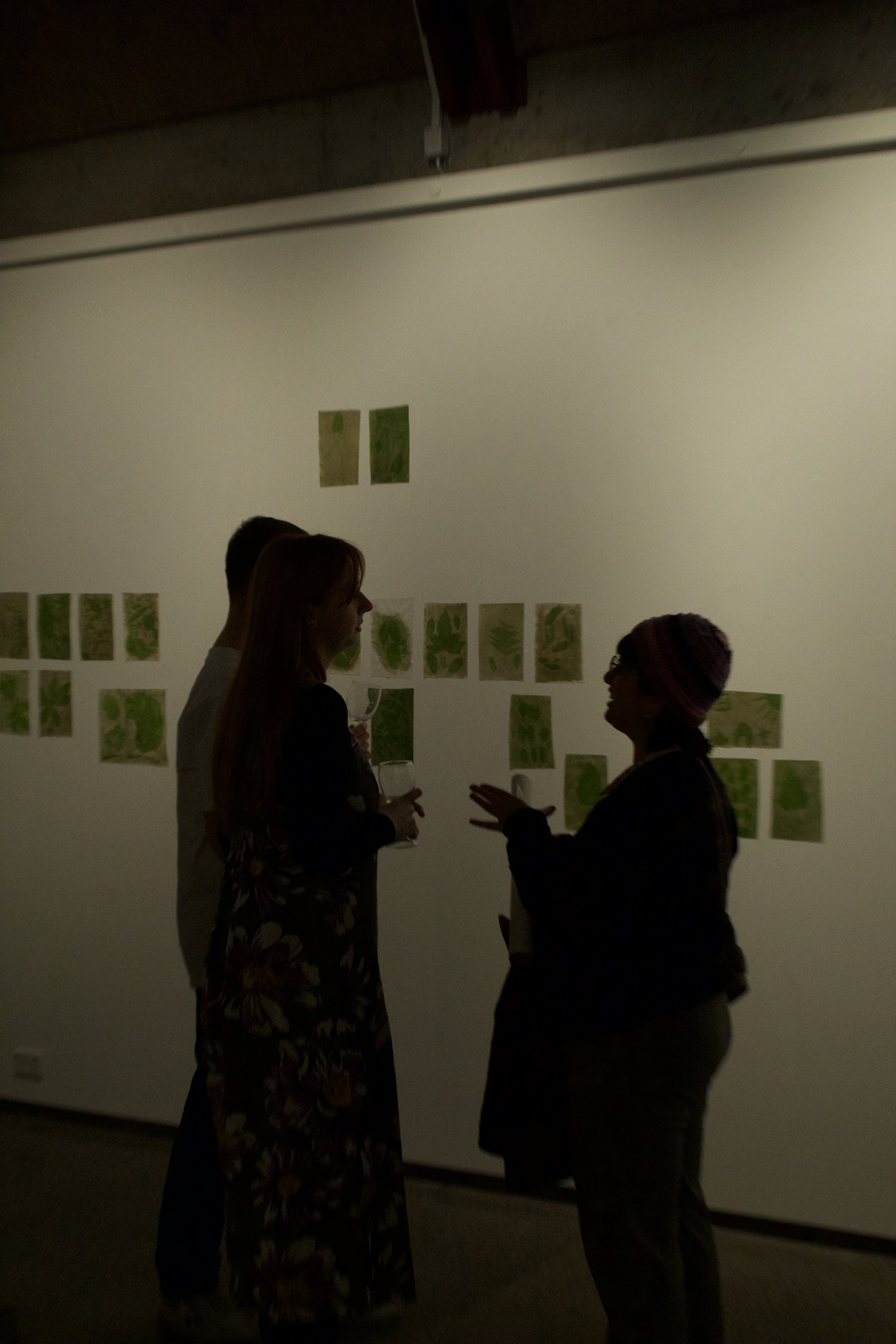
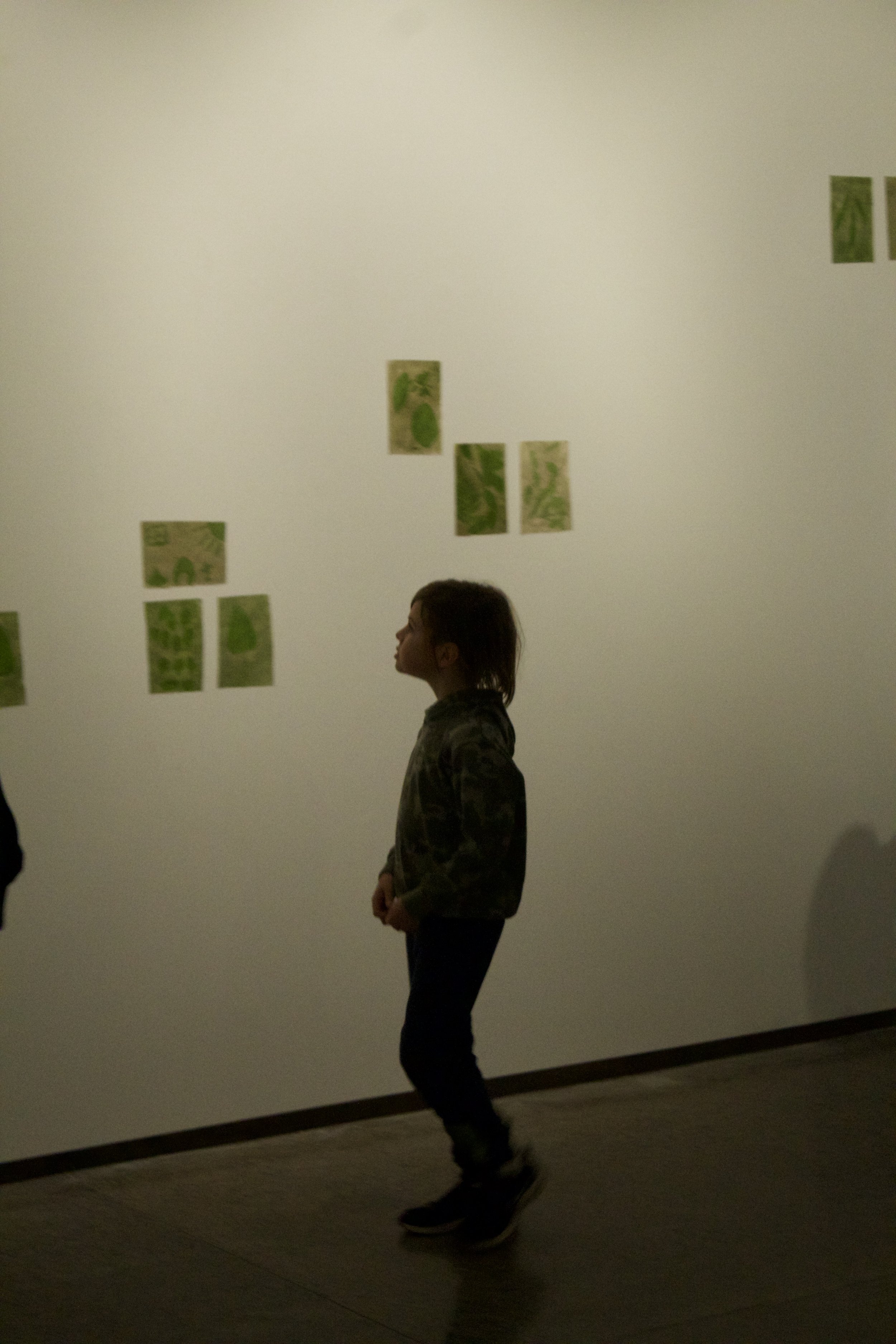
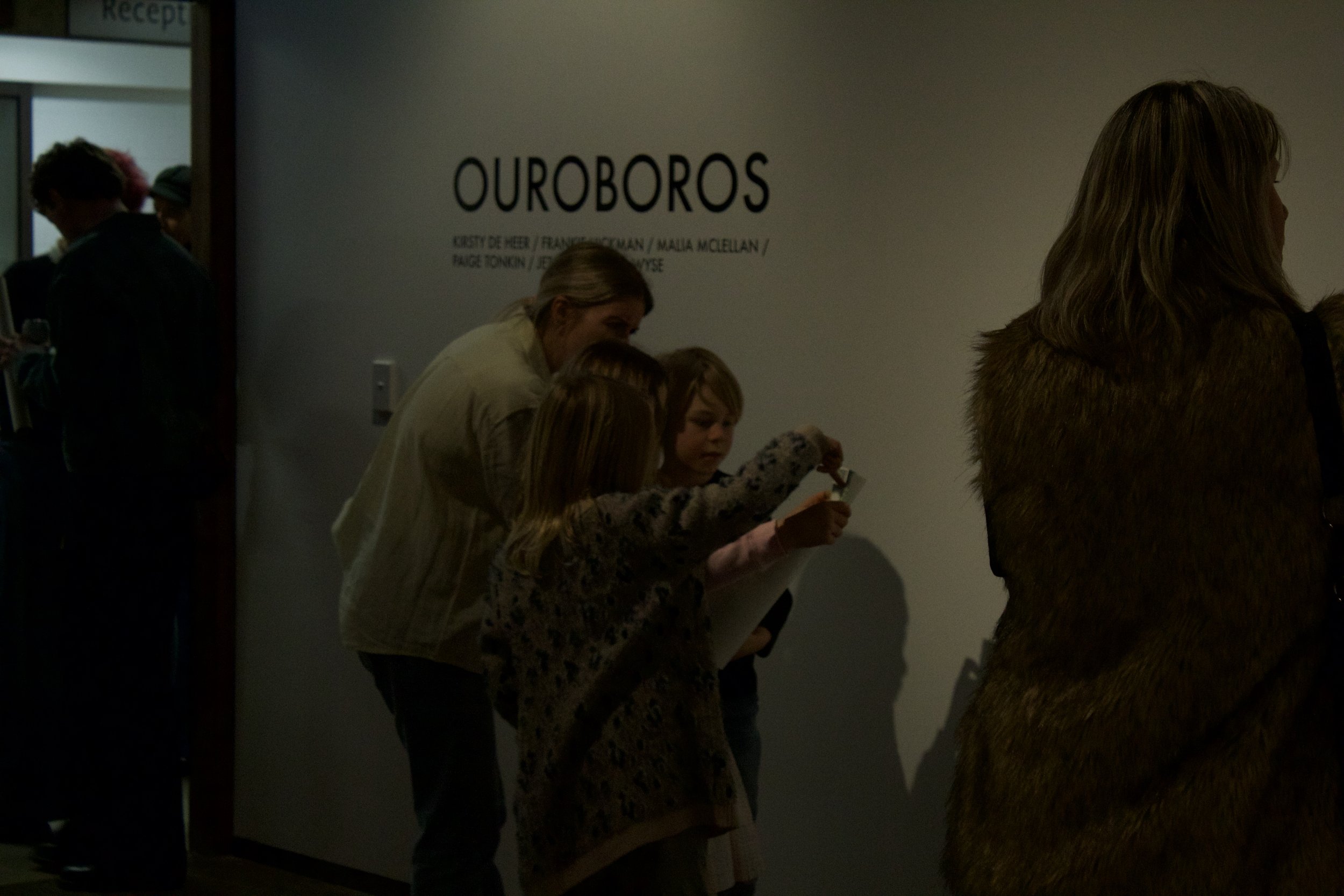
"I used feijoa leaves because they have very good texture on them and it’s inspirational to have a leaf that actually grows fruit. My mum thinks they taste like soap though. The bit I like the most is probably the putting the leaves on the paper because you never really know what you're going to make. We put lots of effort into it."
- Lola
"It's just down the road from my house. It’s big. It's not climbable, its more just like a straight up trunk tree. It was a branch on the ground that had fallen down. My mum likes the smell of the gum tree leaves but I don't."
- Fox
The prints highlight the various urban plant species in Otautahi and the personal experiences had or remembered with each plant. The anthotype process acted as a medium through which students learned about plant science and how to relate their memories to selected plant species, thus fostering a growing interest in the natural environment and realisation that naming and knowing plants is a way to care. During the exhibition the impermanence of plant prints was evident, as the anthotype images fade over time, mirroring the fleeting lifecycle of leaves.
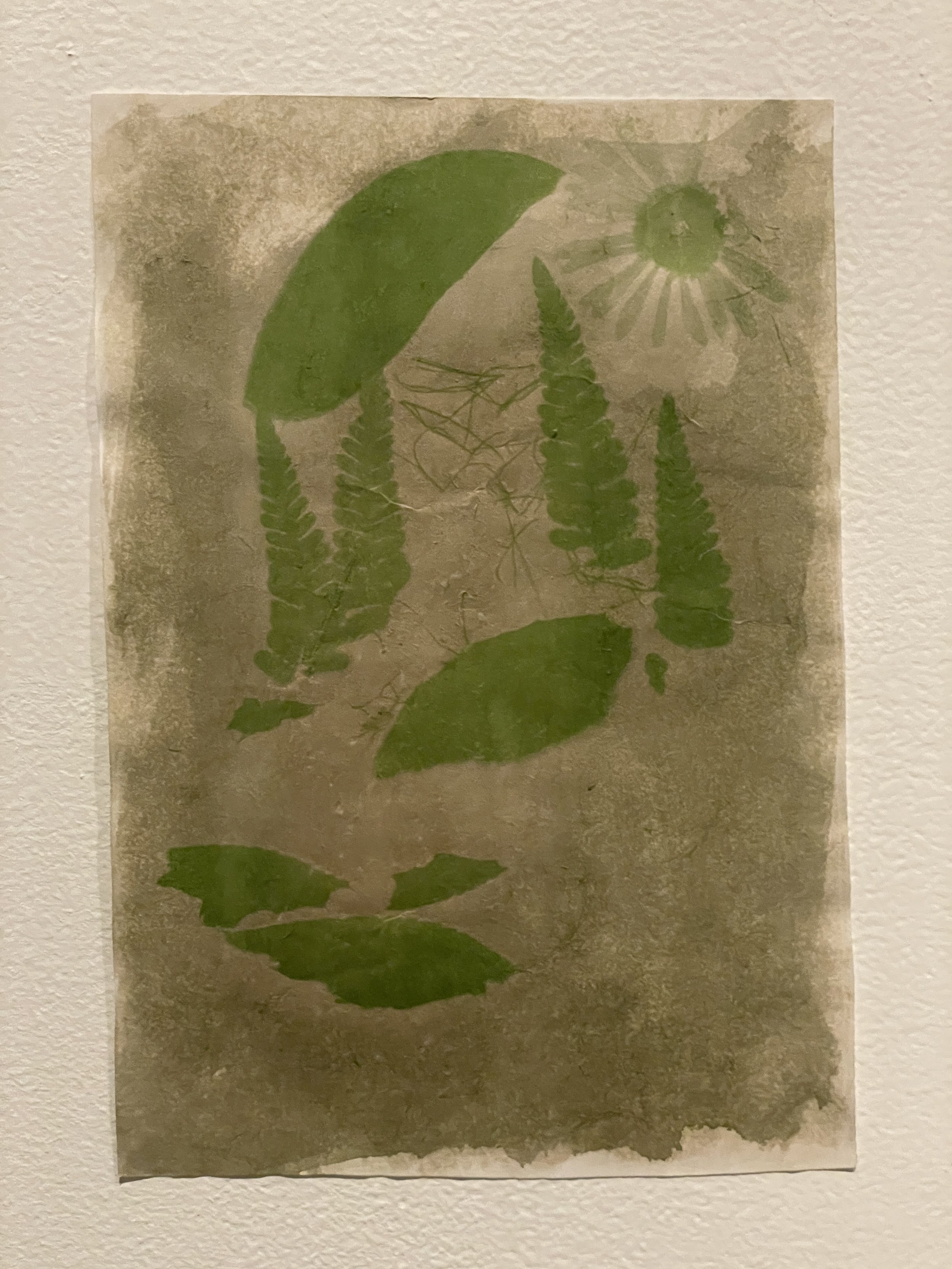
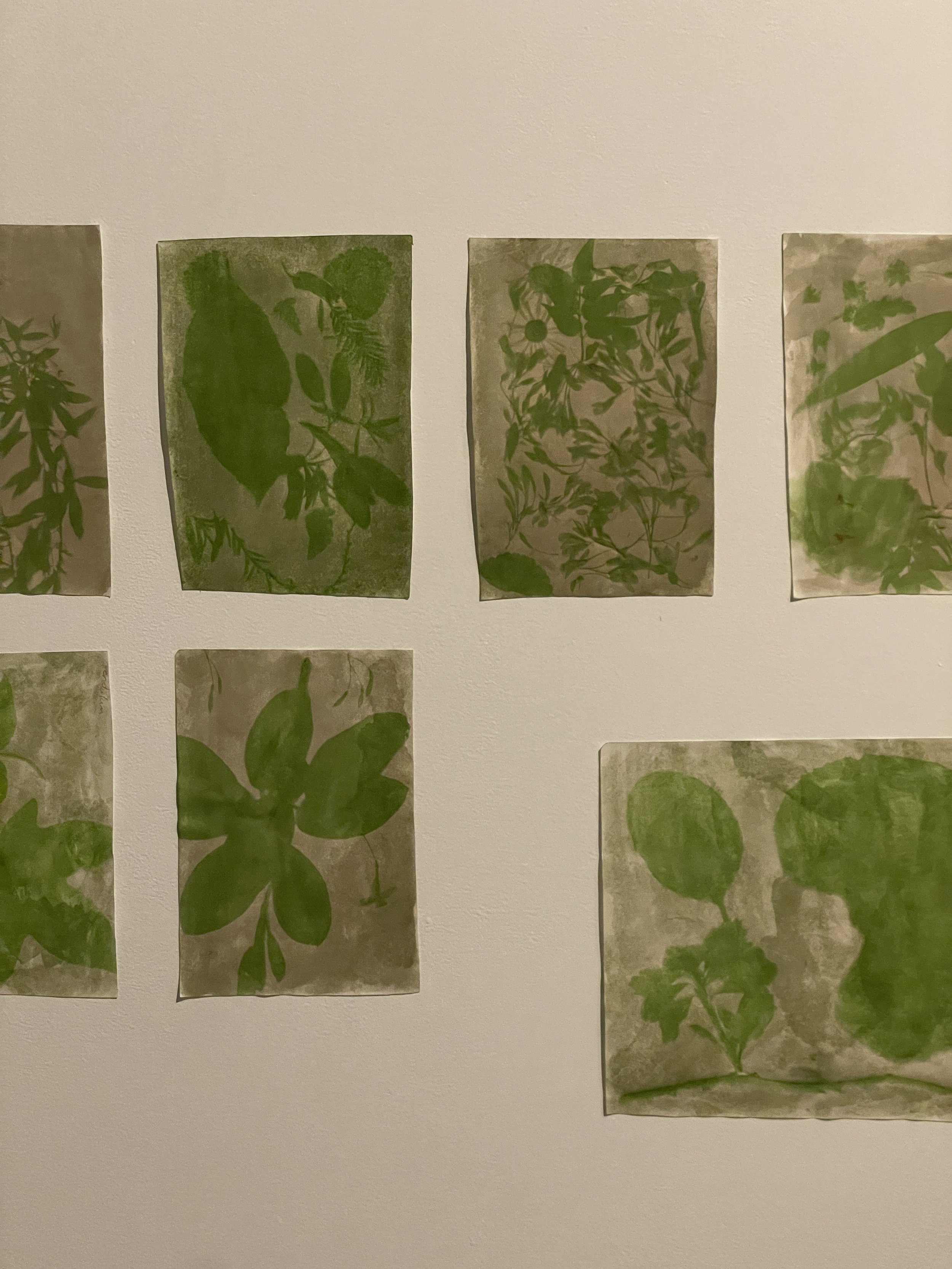
Collaborators:
17 Ao Tawhiti Unlimited Discovery Primary School pupils from Homebase Kiwi Teacher: Mel Fisk
Facilitator: Frankie Hickman
Special thanks to Kirsty, Malia, Paige, Jet, and Tessa for sharing the Ilam Campus Gallery space
Moana J Lee for sharing her rich knowledge of anthotype making
